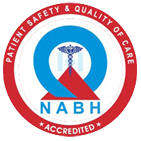FOLLOW THE MISSION HOSPITAL




Glands or lymphoid tissue in the upper part of throat below the nose, also known as the pharyngeal tonsil.
The surgical removal of enlarged adenoids to help prevent blockage of the pharynx (back of throat) or eustachian tubes. It may help prevent ear infections. This is usually done as an outpatient procedure under general anesthesia.
A substance that your body perceives as foreign and harmful; initiates the allergic reaction.
See hay fever
An exaggerated response to a substance or condition produced by the release of histamine or histamine-like substances in affected cells.
Measure (from 1-10) of allergy sufferers who are affected by pollen in your region. Since some types of pollen may be more likely to cause allergies than others, a high allergy index does not necessarily correspond to a high pollen count.
See immunotherapy
Severe, life-threatening allergic response that may be characterized by symptoms such as lowered blood pressure, wheezing, vomiting or diarrhea, and swelling and hives.
Swelling similar to urticaria (hives), but the swelling occurs beneath the skin instead of on the surface. Angioedema is characterized by deep swelling that commonly occurs around the eyes and lips and sometimes of the hands and feet.
Specialized proteins produced by white blood cells that circulate in the blood. Antibodies seek and attach to foreign proteins, microorganisms or toxins in order to neutralize them. They are part of the immune system.
A substance, usually a protein, which the body perceives as foreign.
Medication that prevents symptoms of sneezing, itching, runny nose and possibly congestion by blocking histamine receptors.
Type of medication that reduce swelling and mucus production, particularly for asthma and rhinitis.
A disease of the branches of the windpipe (bronchial tubes) that carry air in and out of the lungs. Asthma causes the airways to narrow, the lining of the airways to swell and the cells that line the airways to produce more mucus. These changes make breathing difficult and can cause a feeling of not getting enough air into the lungs or shortness of breath.
Medications used to relax the muscle bands that tighten around the airways during an asthma episode. Bronchodilators also help clear mucus from the lungs.
Conjunctivitis is an inflammation of the conjunctiva, the tissue that lines the inside of the eyelid. If the cause is bacterial infection, it is called “pink eye” or bacterial conjunctivitis. If the cause is allergic, it is called allergic conjunctivitis.
Tiny scales shed from animal skin and trap on animal fur or hair. Dander floats in the air, falls on surfaces and makes up much household dust. Cat dander is a classic cause of allergic reactions.
Medication that shrinks swollen nasal tissues to relieve symptoms of nasal swelling, congestion and mucus secretion.
Inflammation of the skin, either due to direct contact with an irritating substance, or to an allergic reaction. Symptoms include redness, itching, and sometimes, blistering.
Allergic reaction to a specific medication. The most common cause of drug allergies is penicillin.
A common trigger for indoor allergies. They are microscopic mites that live in the fibers of pillows, mattresses, blankets and carpet. They live off of our dead skin cells. Inhalation of their droppings can cause allergic reactions such as nasal congestion.
A diet in which certain foods are temporarily discontinued from the diet to rule out the cause of allergy symptoms.
Blood test used to identify the substances that are causing your allergy symptoms and to estimate a relative sensitivity.
A form of adrenaline medication used to treat severe allergic reactions, such as anaphylactic shock due to foods or insect stings. It is available in self-injectable form or can be injected by a health care provider.
Allergic reaction that occurs when the immune system responds defensively to a specific food protein when ingested.
Allergic reaction caused by the pollens of ragweed, grasses, trees and other plants whose pollen is spread by the wind.
High-efficiency particulate air (HEPA) filter that removes particles in the air by forcing it through screens containing microscopic pores.
A naturally occurring substance that is released by the immune system after being exposed to an allergen. When you inhale an allergen, mast cells located in the nose and sinus membranes release histamine. Histamine then attaches to receptors on nearby blood vessels, causing them to enlarge (dilate). Histamine also binds to other receptors located in nasal tissues, causing redness, swelling, itching and changes in the secretions.
See urticaria
Products formulated to contain the fewest possible allergens.
The body’s defense system that protects us against infections and foreign substances.
Also called allergy desensitization or allergy shots; immunotherapy is given to increase a person’s tolerance to the substances that provoke allergy symptoms (allergens). Allergy shots reduce your sensitivity to certain substances. They are usually recommended for people who have allergic rhinitis, allergic asthma, and bee sting or fire ant allergies.
Also known as rubber or natural latex. Latex is a milky fluid derived from the rubber tree. It is used in a wide variety of consumer products, including rubber gloves, tubing, rubber bands, etc.
An allergy that develops after some sensitizing contact with latex.
Small aerosol canister in a plastic container that releases a burst of medication when pressed down from the top. Many asthma medications are taken using a MDI.
Parasitic, microscopic fungi (like Alternaria) that float in the air like pollen. Mold is a common trigger for allergies and can be found in damp areas, such as the basement or bathroom, as well as in the outdoor environment in grass, leaf piles, hay, mulch or under mushrooms.
See pollen and mold count
A surgical procedure in which a tiny incision is created in the eardrum, so as to relieve pressure caused by the excessive buildup of fluid, or to drain pus.
Outpatient procedure in which small metal or plastic tubes are inserted through the eardrum to equalize pressure between the middle and outer ear.
A test that allows the doctor to view the nasal cavity to detect polyps or other abnormalities using a fiberoptic camera.
Medication used to treat and prevent nasal allergy symptoms. Available by prescription or over-the-counter in decongestant, corticosteroid or salt-water solution form.
Bacterial or viral infection of the middle ear (the space behind the eardrum).
A physician who specializes in diagnosing and treating a variety of disorders of the ear, nose and throat (ENT), as well as performing surgery of the ear, nose and throat. Also known as an ENT physician.
A lighted instrument that lets the physician see far down into the outer ear canal.
An instrument that blows a puff of air into the ear canal to test eardrum movement.
A fine, powdery substance released by plants and trees
A measure of the amount of allergens in the air. The counts are usually reported for mold spores and three types of pollen: grasses, trees and weeds. The count is reported as grains per cubic meter of air and is translated into a corresponding level: absent, low, medium or high.
A test that measures how much air is in the lungs and how forcefully this air can be exhaled (lung function).
Blood test used to identify the substances that are causing your allergy symptoms and to estimate a relative sensitivity.
Inflammation of the sinuses caused by infectious (bacterial, viral or fungal) or non-infectious (allergic) inflammation. Acute bacterial sinusitis is diagnosed if a common cold does not resolve, but symptoms are less than 4 weeks. It can be treated with antibiotics and decongestants. Chronic sinusitis is characterized by nasal symptoms that last 8 weeks or longer.
A test in which sound and air pressure are used to check for fluid in the middle ear.
Itchy, swollen, red bumps or welts on the skin that appear suddenly. They may be a result of the body’s adverse reaction to certain allergens. They can appear anywhere on the body including the face, lips, tongue, throat or ears. Hives vary in size and can last for minutes or days.

A Unit Of Durgapur Medical Centre Pvt. Ltd.